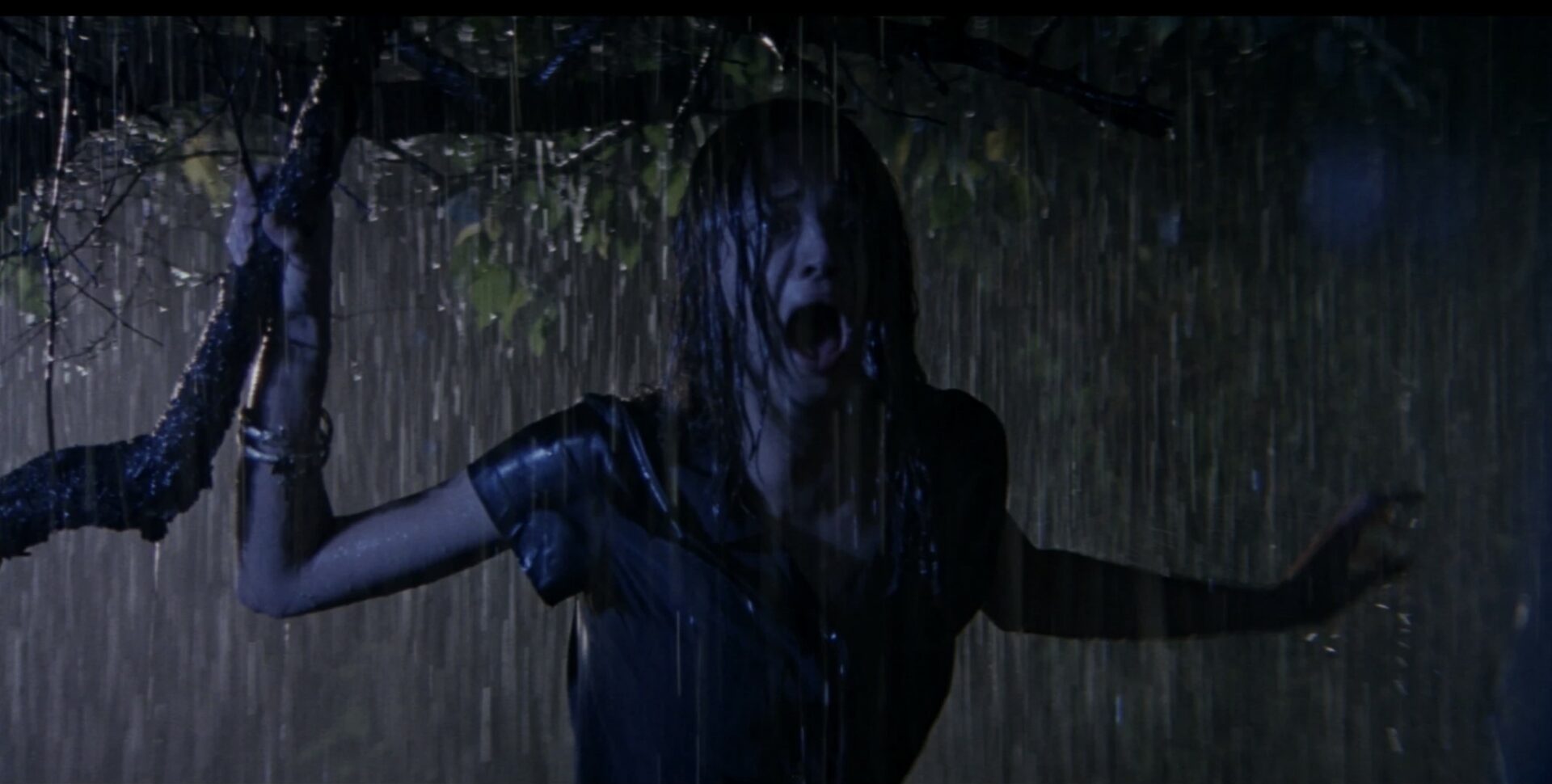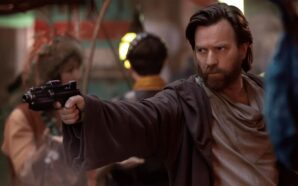There’s some debate to when Dario Argento’s prime period ends. The beginning is simple: his 1970 directorial debut, The Bird with the Crystal Plumage. Despite some weak missteps like the forgotten about The Five Days, or even Inferno, his winning streak continues into the eighties. Some consider Tenebrae to be his last great film, but I find Phenomena too crazy and entertaining not to be included, and instead would consider his final film of the 1980s to be the end of his prime era, Opera. Despite being such a fan of Argento’s work, or maybe because of it, I had not seen a second of his filmography past this point – I’ve heard horror stories about how bad his later films are that are scarier than the films themselves. But there’s only so many times I can rewatch my favourites, I had to expand into the dreaded later decades of his career.
The first film on my list: 1993’s Trauma. It’s quite the difficult film to get hold of in the UK. I had to import a blu-ray from Spain, which uses a shot from Tenebrae on the main menu, so you know a lot of care has gone into it. And, maybe it was a matter of expectations, but I found myself enjoying the film a fair amount. Is the consensus on Argento’s later work wrong? Does his winning streak continue into the nineties?
A big part of my enjoyment came from the oddity of Argento in America. Gone are the beautiful streets and architecture of Rome or Turin and instead the director captures the dullness of Minneapolis. This should be a detraction but it’s such a bizarre change of scenery, yet treated in much the same way as his Italian settings, with all the giallo sensibilities and flourishes, that it has a strong novelty factor. He also gets to work with some US actors who are matches made in overacting heaven. By the end of the film, the only pieces of scenery left are those Piper Laurie is picking from her teeth, and Brad Dourif features in a disappointingly small but very memorable role, which sees him accidently cut off a baby’s head before getting his own removed by an elevator.
The novelty factor is Trauma’s raison d’etre. Viewed by a giallo newcomer, it’s not a particularly good film. But in my position, wanting to expand from just the core classics, it was a delight. Why watch Deep Red for the 10th time when you can instead watch an insane new mashup of that movie. Trauma is a remix of so many of Argento’s previous elements, executed in poorer fashion, sure, but also with interesting twists. It’s a jigsaw puzzle for Argento fans, various elements from his films forced together in a new pattern.
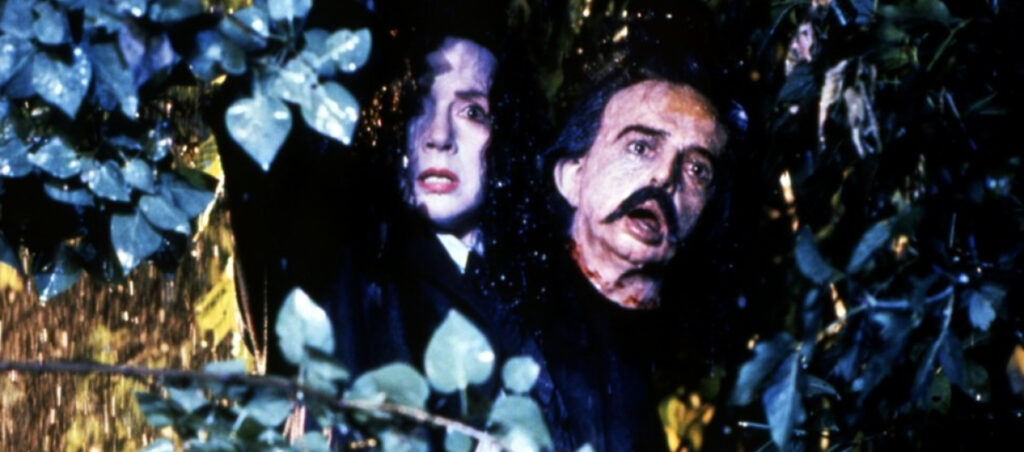
Trauma features a psychic character detecting the black-gloved killer, and being seemingly killed before she can reveal their identity. Just like Deep Red. The killer is revealed to be an older woman, the mother of a key character, also just like Deep Red. But the twist is, insanely, what if these two characters were one and the same, with the psychic faking her death to continue killing freely. It makes very little sense but it sure is fun. There’s also a young kid with a lizard living next to the killer’s creepy house, like in Deep Red. An elevator shaft death like in The Cat o’ Nine Tails. The young girl in a foreign country from Phenomena. The lesbian couple from Tenebrae. The killer dies in a sudden unexpected car crash, like in Four Flies on Grey Velvet, although, gladly, unlike that film, it’s a fake-out and not the actual final scene.
Argento loves smashing a woman’s head through a window. Trauma features the natural development of this: instead of just cut throats, he now fully commits to beheadings. The killer’s methodology is decapitation with a ‘bolito’ style, custom beheading device; basically a mechanised garrot that was dubbed the ‘Noose-o-Matic’ by the crew. It’s a fun gimmick, made even better by Argento teaming up with Tom Savini for the gore effects. The decapitated heads, whether fake or real with the rest of the actor’s body hidden, range from effective to hilariously ineffective shot by shot.
The killer also had a second gimmick: killing only when it’s raining. Thankfully for them, and us watching, Minneapolis always seems to be in the midst of a thunderstorm, complete with dramatic blue lightning flashes, making each murder sequence seem positively gothic. In the one moment circumventing this rule, the killer sets off the sprinklers in a hotel room, creating their own rain, which also has the added bonus of turning the victim’s sheer white top transparent, which feels like a link through giallo heritage to Mario Bava’s masterpiece Blood and Black Lace. But as fun as some of the kills are, there is a long time between some of them; Trauma doesn’t have the kill-every-ten-minutes pace of Tenebrae.
In fact, Trauma kind of forgets about its killer for a good chunk of the film. While it plays like a more classic detective/killer giallo in its second half, the first aims to be more of a character drama featuring Aura, played by the director’s daughter Asia Argento. This is the first film of her father’s that she’s starred in, although she had previously featured in films he’d produced, like disappointing sequel Demons 2 and the brilliantly barmy The Church. Acting-wise, she’s inconsistent here. I don’t think she’s strong enough for the lead dramatic role but she’s good in the horror scenes. She plays traumatised very well.
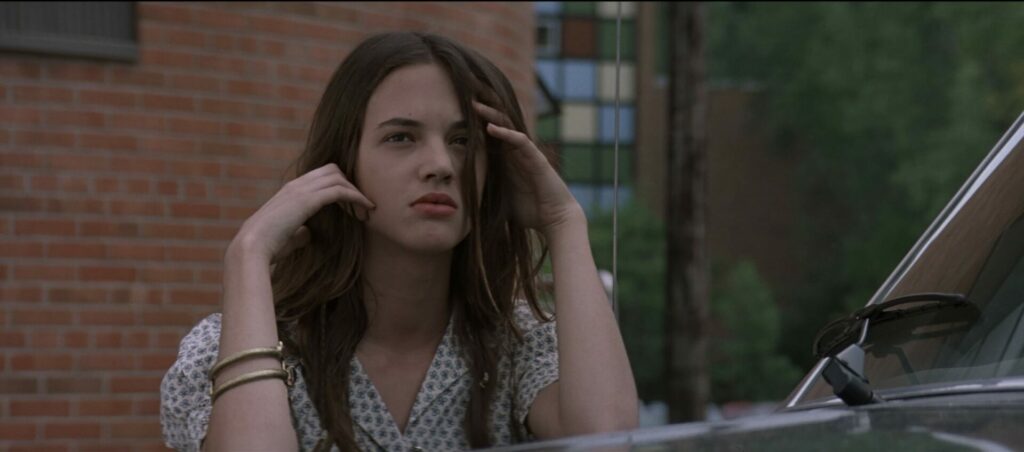
Although, perhaps she’s not playing traumatised and is, simply, actually traumatised. It’s very strange what Dario Argento has his daughter do in his films. Here she’s only 16, and yet gets a topless scene and forms a relationship with a much older man. It’s uncomfortable viewing, leaving some viewers appalled while others simply shrug and mutter “eh, they’re European”. Aura is a troubled young girl and suffers from anorexia, which Argento’s stepdaughter Anna actually struggled with. Dario has some weird things to say about the condition, including claiming that it is created from an unhealthy relationship with the mother (which feels like a dig at his ex-wife Daria Nicolodi) and that all anorexic girls have dreams of being kissed by their fathers, which is an icky thing for the father of a real anorexic girl to say.
Author and critic Michael Mackenzie splits giallo films into two distinct categories – M-gialli, focusing on male protagonists, and F-gialli, focusing on female protagonists – which explore how the sexes differently negotiate the sexual and gender topics the films present. Trauma tries to do both, neither particularly successfully. Alongside Aura, there’s also David, the outsider drawn into the mystery as an amateur sleuth who gets in over his head.
Played by Christopher Rydell, who looks like a young Shooter McGavin, David feels like a clear attempt to recapture the magic of David Hemming’s character Marcus from Deep Red. Marcus was an old fashioned chauvinist suddenly thrown into a world of women’s lib, female killers, and queer subculture, who was fascinating to watch flounder and barely survive. There’s a fine line between this and a character of pure incompetence and unawareness, who isn’t making much of a point, and David falls into that latter category. He’s not engaging to watch, just stumbling his way through the plot and shrugging it off at the end because he’s happy he’s groomed a 16-year-old. The film’s characters are its weakest element.
I feel that Trauma would be remembered more fondly if it had a better soundtrack. Argento wanted to have Goblin record the score but American producers vetoed this idea for a more standard orchestral score by Pino Donaggio. The music is fine but come on, I want some weird Italian prog rock. If I was in any way competent at such tasks, I would love to edit Goblin’s music from Deep Red to scenes from Trauma, particularly the end where David is exploring the killer’s house, much like my favourite scene from Deep Red where Marcus just walks around an old house for five minutes while the coolest music ever plays. Although Trauma instead features a lame American suburban home rather than that amazing dilapidated Italian manor.
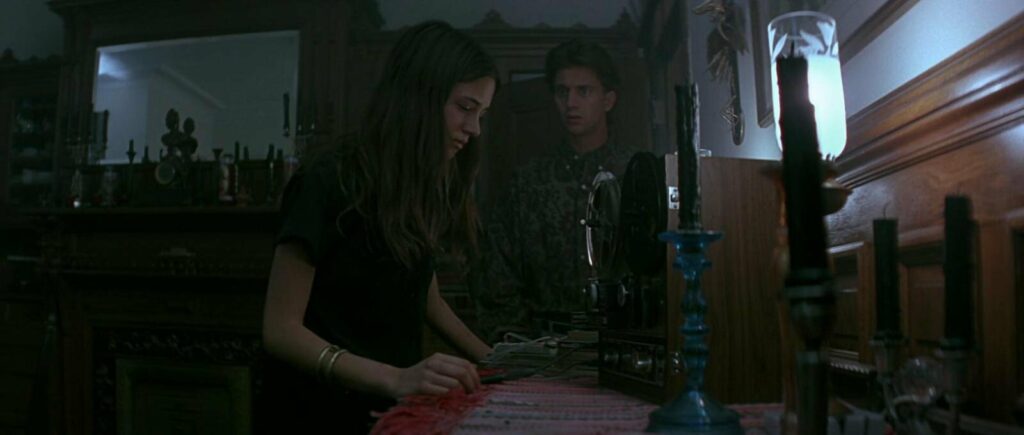
Trauma’s ending is very silly, stretches logic to the extreme, but is rather fun. Aura is kidnapped but her disappearance is meant to look like a suicide, and David goes on a drugs bender. Randomly, he sees the killer walk past him in the street, but only sees Aura’s bracelet that they are wearing, and he somehow follows the killer from the city centre to the suburbs without getting a single identifying look at them, ultimately reaching their house. He finds Aura and the killer is revealed to be Aura’s mother, who was thought dead. It turns out she’s been killing the doctors and nurses who accidently cut off her baby’s head during a thunderstorm, hence the beheadings and rain. Makes perfect sense.
The reveal is where the final Argento staple comes into play. Like with Marcus in Deep Red, or Sam in The Bird with a Crystal Plumage, Aura saw something early in the film but then questions what is was exactly she saw and can’t quite get the answer. It turns out she thought she saw the killer holding her mother’s head but it was just that the killer was her mother. It’s certainly the weakest version of this Argento trope. Just as the killer is about to strike, the kid neighbour throws the beheading device around her neck and she gets her head cut off from behind, just like the fate of the killer in Deep Red.
Cue the funniest disparity between the tone of a film and the music chosen for the end credits I’ve ever witnessed. After the bleak, dark giallo film suddenly we get some reggae. As the band plays on the porch of a house, they are joined by a young dancer. This is Anna, Argento’s step daughter who inspired the character of Aura. It’s a nice moment, to have her symbolise this moment of triumph, as she herself beat anorexia. But as she’s dancing she’s increasingly lit by a bright heavenly light, like she’s died and become an angel or something. This is made stranger by the fact Anna did die soon after the film was released in a scooter accident. That occurred a year later but the end of the film plays like an in memoriam tribute to her.
I think I enjoyed Trauma because of the circumstances of when I watched it. An Argento fan, very familiar with his earlier works, daring to take a chance on a film I had very low expectations of. It’s not his best written, the visuals aren’t very noteworthy, the atmosphere lacking. It’s not original at all but that flaw is also a strength. It plays like an alternate reality version of Deep Red; a mashed up American remix of a bunch of Argento’s ideas all in one film. It’s a flawed novelty that deserves a slightly better reputation than it has, but should come with an asterisk. It’s for Argento and giallo fans who have already exhausted the best work but are still looking for a fix wherever they can get it.




